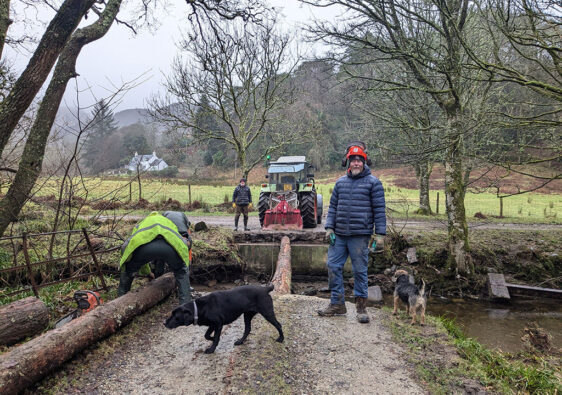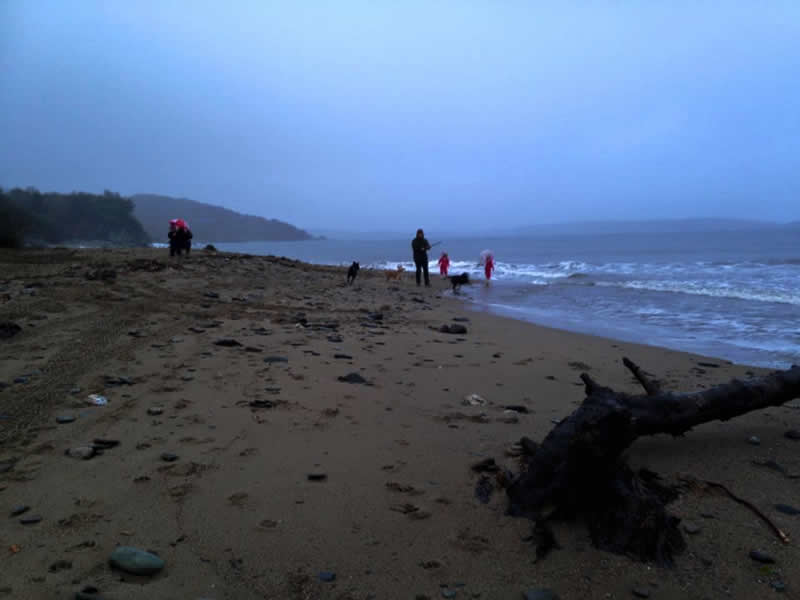Any member of the group of eukaryotic organisms that includes microorganisms such as yeast and moulds as well as the more familiar mushrooms. These organisms are classified as a kingdom, Fungi, which is separate from the other eukaryotic life kingdoms of plants and animals
(thanks Wikipedia for that!)
Following on from my Meadowsweet blog, I would love to share my recent foraging finds. I recently attended a foraging workshop in Inveraray which was a wonderful introduction to what is available on our doorstep. It was a soaking wet day but our 3 hour walk was rewarded with all kinds of edible treasures.

On the top row of the board, you can see Meadowsweet which has gone out of season now but apparently you can use the seeds for cooking. Common Hog Weed is on the same row. This is also at the end of its season and has formed seed pods. These can be dried and crushed for use in cooking. At the bottom of the photo you can see the range of mushrooms we found. I have never foraged for mushrooms before so I am not an expert by any stretch of the imagination, but I have become quietly confident about picking the more easily identifiable mushrooms. The following is a flavour of what I dare to pick and consume, but please don’t just take my word for it. If you do decide to take a walk on the foraging side, then please research thoroughly beforehand and be very careful about what you pick to eat.
One of the mushrooms I can now confidently identify and can assure you tastes very good, is the oddly named Hedgehog Mushroom (Hydnum Repandum). This is in season from September to January and is obvious once you know what you are looking for. It doesn’t seem to have any poisonous lookalikes which is always a bonus! The Hedgehog mushroom is like the Chanterelle but is pale in colour, rather than orangey yellow. The key thing to look out for is the underside – it should have teeth, not gills. These teeth look like little spikes, hence the name!
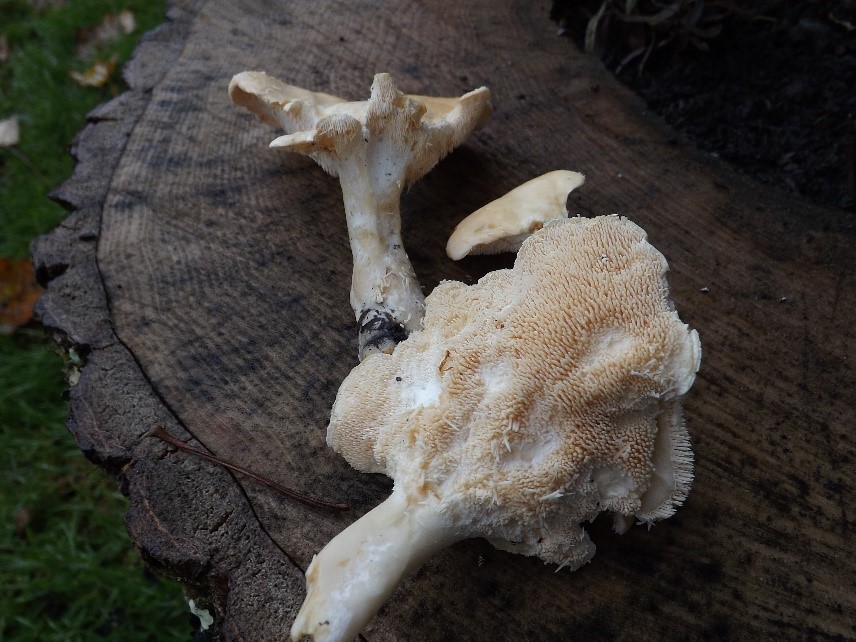
The next photo shows the different sizes of mushrooms.The Hedgehog on the right is much larger than the one on the left. This is a Common Puffball They come in different shades of colour ranging from white to taupe, but they must be eaten when young and still completely white in the centre. If any discolouration has occurred then don’t eat them as this will effect the flavour.
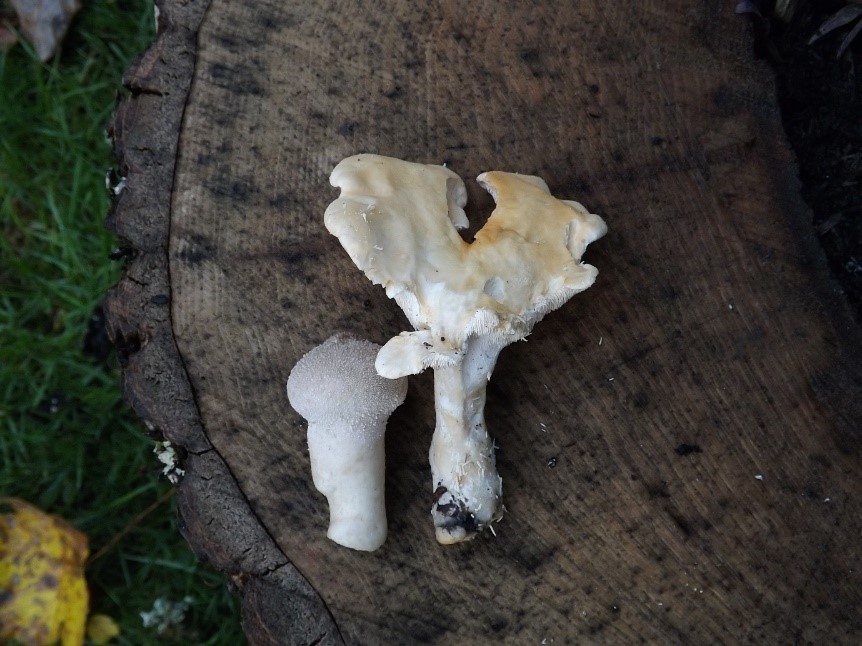
Puffballs appear all over the estate but I haven’t seen a Giant Puffball yet. These can grow as big as a football, and are edible, unless blackened on the inside. The smaller varieties tend to grow in clusters and have a funny powdery feel to them, you can just make out the specks on the surface of the puffball. Its best to peel them as this skin can be quite tough, and remember, only eat if the inside is still pure white.
Chanterelle’s are found on the estate but take a bit more effort to spot. They grow in clusters in mossy coniferous forests but can also be found in birch forests and among grasses and low-growing herbs. Their season tends to be from July through to December. Yellowy orange in colour with wrinkles rather than gills to the underside, they are easily recognisable and are very good for you, being high in vitamin C, potassium and vitamin D. However, they do have a close relative that is not to be eaten – The False Chanterelle. This is very similar, but the colour tends to be graded with a darker centre and they have attachments of gills to the stem. If you happen to eat a False Chanterelle, they won’t taste very nice and will probably give you mild gastrointestinal distress. Definitely one to avoid if you can!
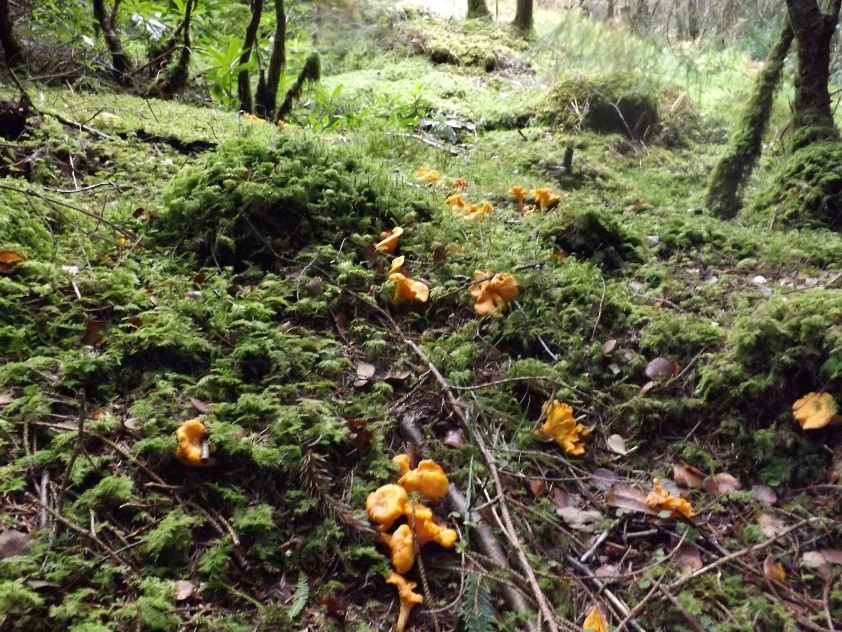
Foraging Rules
- Please only pick what you need for your own use, always try and leave something behind. If we start clearing whole patches of mushrooms too regularly they won’t be there for us or the wildlife to enjoy in the future. A little bit is good but don’t over indulge.
- Be mindful of where you are picking, if its near to a pathway, be aware that dogs may be walked there so watch out for any nasties.
- It’s courteous to let the land owner know you are planning to forage and remember to tread carefully as you don’t know what else you are walking over
- Remember the blog about wildlife. Animals will be hibernating now!
- Treat the natural area around you with respect & you could be rewarded with a source of natural food and beauty to enjoy for a long time.
Storing and handling
Wild Mushrooms should be kept in the fridge in a paper bag (best consumed in 3 days but can last up to a week) Ideally try and clean them without water. You can get special paring knives and mushroom brushes but a straight forward tea towel can be used to get as much of the debris off as possible. If they are a little damp when you find them, let them air dry in the fridge and this should help preserve them a little longer. Don’t be frightened if there are bugs on them, just wipe them off! It’s all part of the foraging experience.
Some mushrooms can be dried. Chanterelles are well suited to this but don’t try it with the hedgehog as it doesn’t really work. I have read you can dry puffballs if you peel and then slice them thinly before drying.

